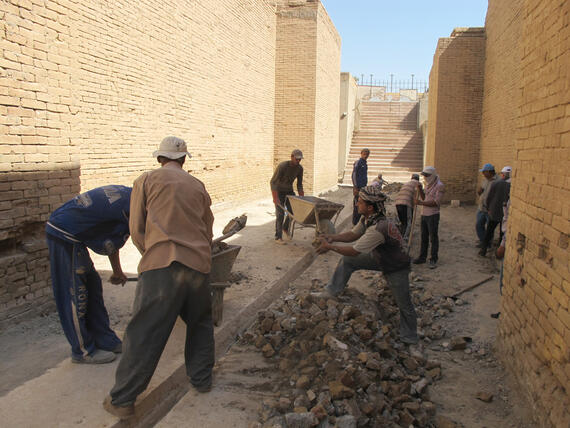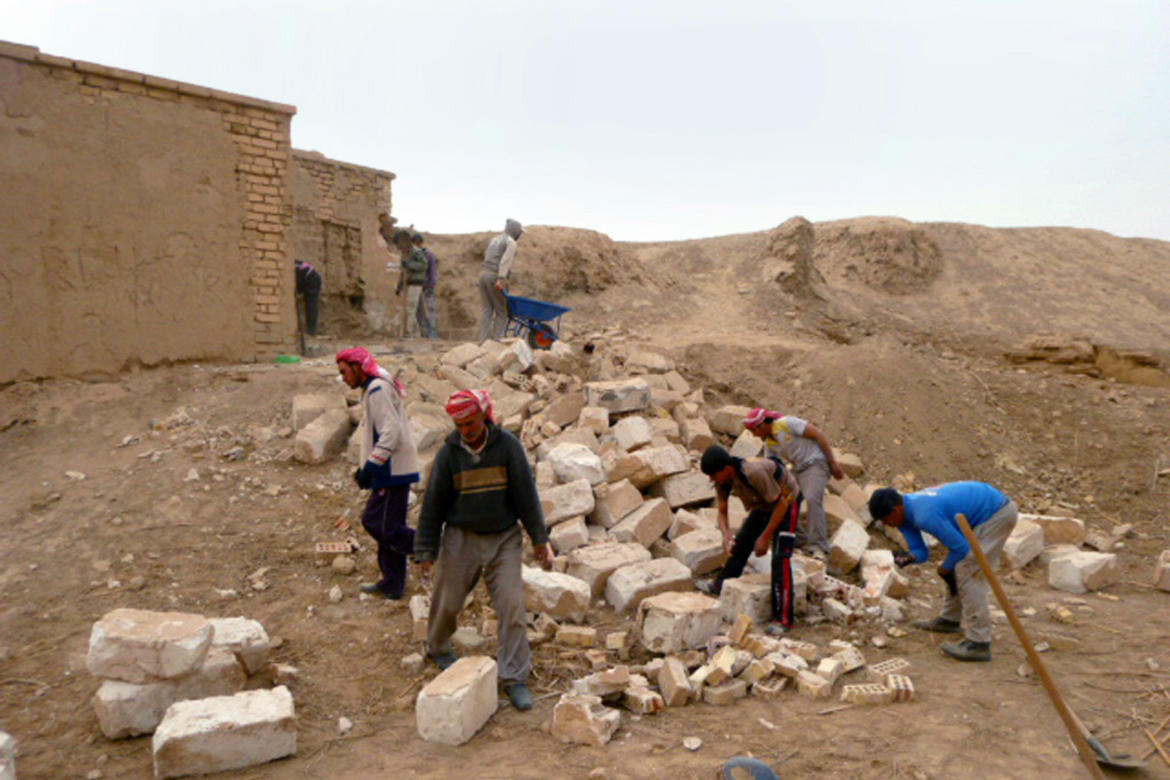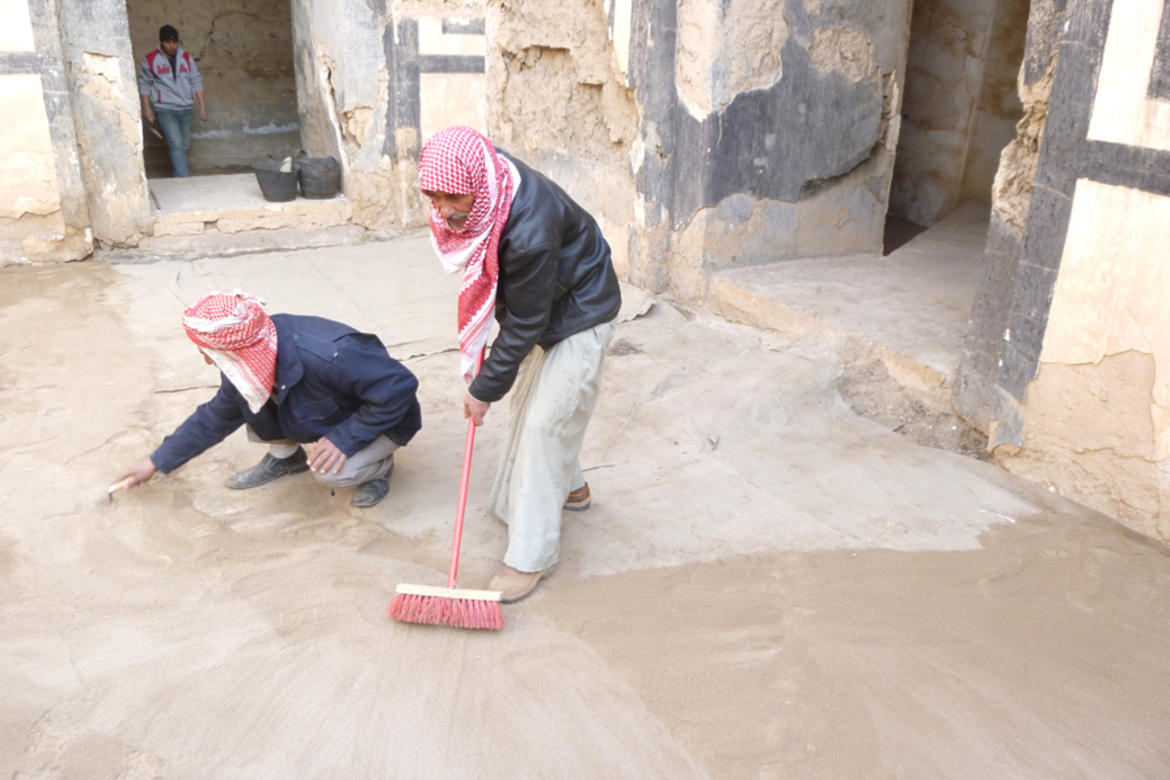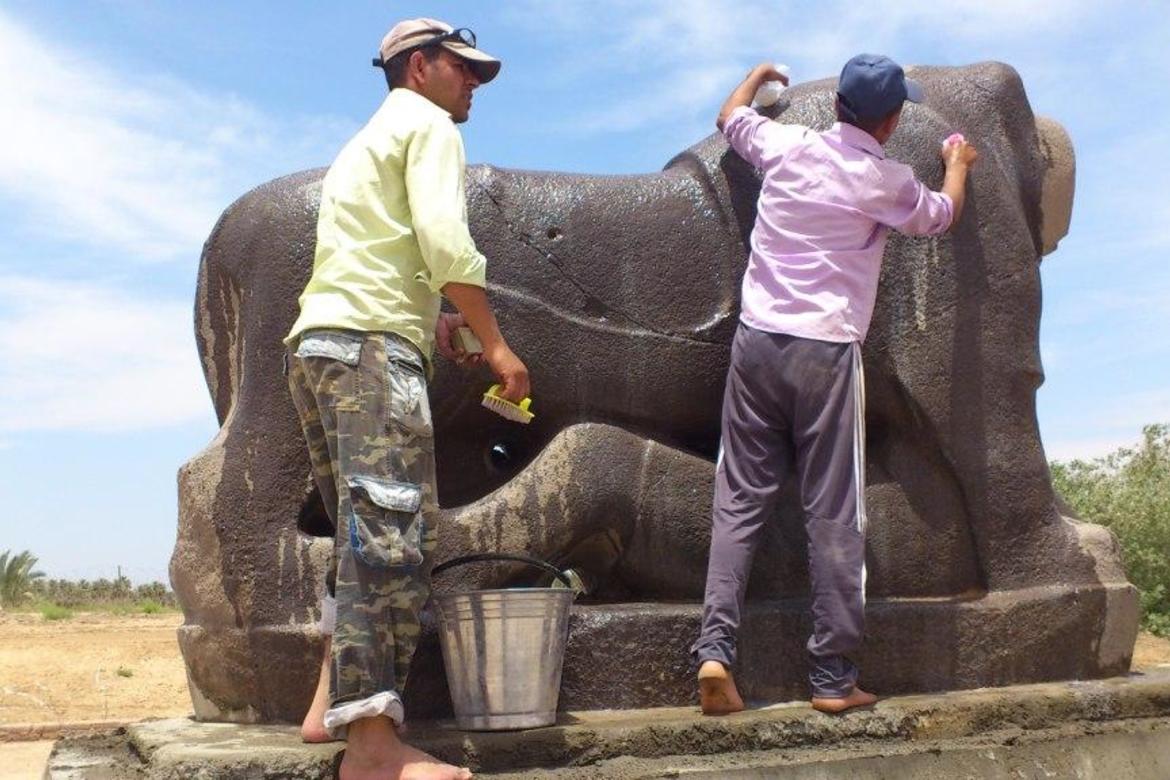Keeping Babylon Clean is a Full-Time Job

I have worked for the Iraq State Board of Antiquities and Heritage for over 25 years. As a young archaeologist I started at Babylon’s Southern Palace, where I re-excavated the work of Robert Koldewey nearly 100 years before us, and re-found its original walls. We went further though, and nearly reconstructed the entire building.
Inspired by Nebuchadnezzar II, Saddam Hussein rebuilt Babylon’s ruins as a means of promoting national pride and his self-image, reconstructing Nebuchadnezzar’s Southern Palace and creating the adjacent hill (Mt. Saddam) topped with a palace of his own were just a couple examples. The work, although extensive, was less an attempt to study and highlight the site’s history than to guarantee Saddam’s place in a long line of kings.
It was also reckless. Often uninformed by archaeological findings or the painstaking demands of conservation, it abandoned any pretensions of following scientific methods and international standards; instead, we operated on non-negotiable orders and fulfilled them to the best of our abilities, and so did a lot of other Iraqis back then.
Uninformed by conservation techniques these super-imposed reconstructions have fallen into disrepair, at times bringing parts of the original structures down with them. On top of that, years of conflict, economic despair, and budget shortages left piles of garbage, broken fixtures, abandoned buildings, and military fortifications strewn across the landscape of once the world’s greatest city.
Today, with World Monuments Fund, I work to clean up Babylon. We have our hands full too. Besides taking conservation action, we demolish inappropriately placed modern structures built on top of fragile archaeology; backfill shooting trenches dug by the Iraqi military under Saddam; bust out thick concrete pavement where it does not belong; and remove an assortment of derelict items, such as broken picnic tables, bent electric light poles, ruined machinery, dead trees, and haul away hundreds of meters of razor wire leftover from Coalition Forces in 2004. On top of that, believe it or not, we also regularly cut back vegetation that in the spring can turn areas of otherwise desert-like Babylon into a jungle.
Keeping Babylon clean is a full-time job, but with the ongoing war the Iraqi government has little to spare. Thanks to World Monuments Fund, a group of local villagers and I make progress to return Babylon to being a place of pride for all Iraqis, just as it was in my youth.
Special thanks to the U.S. State Department Ambassadors Fund for Cultural Preservation and the U.S. Embassy in Baghdad for their support.
Image top: Clean up of broken concrete at Ishtar Gate



